Brands
 AR: Ar, populous and wealthy, the greatest city of known Gor, was regarded as a symbol of quality in merchandise. The stamp of Ar, a single letter, that which appears on its Home Stone, the Gorean spelling of the city's name, was often forged by unscrupulous tradesmen and placed on their own goods."
Marauders of Gor, Pg. 112
 BARBARIAN BRAND: (This isn't really a "brand" perse, but the result of a mark leftover from a vaccination on earth only found on slaves brought from Earth.) "'Look,' said the first man, taking me by the uppper arm, and turning it to the light. 'The barbarian brand.' I did not see how I could explain this vaccination mark the men without making clear that my origin was not Gorean. The vaccination was in connection with a disease which, too, as far as I knew, did not even exist on Gor." BARBARIAN BRAND: (This isn't really a "brand" perse, but the result of a mark leftover from a vaccination on earth only found on slaves brought from Earth.) "'Look,' said the first man, taking me by the uppper arm, and turning it to the light. 'The barbarian brand.' I did not see how I could explain this vaccination mark the men without making clear that my origin was not Gorean. The vaccination was in connection with a disease which, too, as far as I knew, did not even exist on Gor."
Kajira of Gor, Pg. 258
 BRAND TYPES: "There are many types of brands, some of which are the kef (common kajira brand), Dina, Palm, mark of Treve, and mark of Torvaldsland. When an individual captures a girl for his own uses, he does not always mark her, though it is commonly done. On the other hand, the professional slaver, as a business practice, almost always brands his chattels, and it is seldom that an unbranded girl ascends primary significance of the collar is that it identifies the master and his city. The collar of a given girl may be changed countless times, but the brand continues throughout to bespeak her status." BRAND TYPES: "There are many types of brands, some of which are the kef (common kajira brand), Dina, Palm, mark of Treve, and mark of Torvaldsland. When an individual captures a girl for his own uses, he does not always mark her, though it is commonly done. On the other hand, the professional slaver, as a business practice, almost always brands his chattels, and it is seldom that an unbranded girl ascends primary significance of the collar is that it identifies the master and his city. The collar of a given girl may be changed countless times, but the brand continues throughout to bespeak her status."
Outlaw of Gor, page 189
"I have five brands," said the metal worker, "the common Kajira brand, the Dina, the Palm, the mark of Treve, the mark of Port Kar."
Explorers of Gor, Pg. 70
CHEMICAL: "'A small chemical brand,' she said, 'which you will wear in your flesh, something by which our agents in Cos will recognize you.' 'Chemical brand?' I said. 'It will remain invisible until the proper reagent is applied,' she said.'Can it be removed?' I asked. 'Yes,' she said, 'but you cannot remove it. It requires the proper combination of chemicals.'"
Slave girl of Gor, Pg. 201
 DINA:
"A small short-stemmed flower indigenous to hillsides, it is sometimes called the 'slave flower' and is often used as a design for slave brands. my own brand was the "dina"; the dina is a small lovely, multiply pedaled flower, short-stemmed, and blooming in a turf of green leaves, usually on the slopes of hills, in the northern temperate zones of Gor; it is and exotic, alien flower; it is also spoken of, in the north, where it grows most frequently, as the slave flower; it was burned into my flesh." DINA:
"A small short-stemmed flower indigenous to hillsides, it is sometimes called the 'slave flower' and is often used as a design for slave brands. my own brand was the "dina"; the dina is a small lovely, multiply pedaled flower, short-stemmed, and blooming in a turf of green leaves, usually on the slopes of hills, in the northern temperate zones of Gor; it is and exotic, alien flower; it is also spoken of, in the north, where it grows most frequently, as the slave flower; it was burned into my flesh."
Slave Girl of Gor, Pg. 61
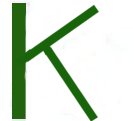 KAJIRUS:
"The brazier, fierce with heat, stood not two yards from Marlenus of Ar. Its coals were poked and stirred with one of the metal bars. Then one of the men of Tyros lifted the iron, glowing redly, from the fire. Its marking surface, its termination, soft and red in the night, was in the form of a large, block letter in Gorean script, the initial of Karjirus, a common Gorean expression for a male slave." KAJIRUS:
"The brazier, fierce with heat, stood not two yards from Marlenus of Ar. Its coals were poked and stirred with one of the metal bars. Then one of the men of Tyros lifted the iron, glowing redly, from the fire. Its marking surface, its termination, soft and red in the night, was in the form of a large, block letter in Gorean script, the initial of Karjirus, a common Gorean expression for a male slave."
Hunters of Gor, Pg. Pg. 194
 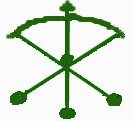 KASSARS: "One of the four Tribes of the Wagon Peoples, they are are known as the Blood People. Their brand, which is used on both slaves and bosk, is a stylized representation of a bola, three circles joined at the center by lines. The standard of the Kassars is that of a scarlet, three-weighted bola, which hands from a lance; the symbolic representation of a bola, three circles joined at the center by lines, is used to mark both their bosk and slaves." KASSARS: "One of the four Tribes of the Wagon Peoples, they are are known as the Blood People. Their brand, which is used on both slaves and bosk, is a stylized representation of a bola, three circles joined at the center by lines. The standard of the Kassars is that of a scarlet, three-weighted bola, which hands from a lance; the symbolic representation of a bola, three circles joined at the center by lines, is used to mark both their bosk and slaves."
Nomads of Gor, page 106
 KATAII:
"One of the four tribes of the Wagon Peoples. Their brand is a yellow bow, facing to the left. ..the standard of the Kataii is a yellow bow, bound across a black lance; their brand is also that of a bow, facing to the left.." KATAII:
"One of the four tribes of the Wagon Peoples. Their brand is a yellow bow, facing to the left. ..the standard of the Kataii is a yellow bow, bound across a black lance; their brand is also that of a bow, facing to the left.."
Nomads of Gor, Pg. 106
 KEF:
"A letter of the Gorean alphabet analogous with the Earth letter 'K'; the first letter of the Gorean words for male and female slaves and hence often used as a brand. It is sometimes called the "staff and fronds" due to its appearance. I had now been branded, a small, graceful mark burned into my left thigh, high, under the hip. It had a vertical bar, a rather strict one, with two curling, frondlike extensions, rather near its base, as though in submission it. It looked a little like a 'K.'" KEF:
"A letter of the Gorean alphabet analogous with the Earth letter 'K'; the first letter of the Gorean words for male and female slaves and hence often used as a brand. It is sometimes called the "staff and fronds" due to its appearance. I had now been branded, a small, graceful mark burned into my left thigh, high, under the hip. It had a vertical bar, a rather strict one, with two curling, frondlike extensions, rather near its base, as though in submission it. It looked a little like a 'K.'"
Magicians of Gor, Pg. 67
KNIFE: "Rather like a tattoo, an appropriate design is cut into the thigh of a slave and a colored powder is rubbed into it. Used in the jungle of Schendi. From the box he then took a small, curved knife and a tiny, cylindrical leather flask. I gritted my teeth, but made no sound. With the small knife he gashed my left thigh, making upon it a small, strange design. He then took a powder, orange in color, from the flask and rubbed it into the wound."
Explorers of Gor, Pg. 330
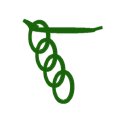 KURII:
"Incidentally, there are many brands on Gor. Two that almost never occur on Gor, by the way, are those of the moons and collar, and of the chain and claw. The first of these commonly occurs in certain of the Gorean enclaves on Earth, which serve as headquarters for agents of the Priest-Kings; the second tends to occur in the lairs of Kurii agents on Earth; the first brand consists of a locked collar and, ascending diagonally above it, extending to the right, three quarter moons; this brand indicates the girl is subject to Gorean discipline; the chain-and-claw brand signifies, of course, slavery and subjection with the compass of the Kur yoke." KURII:
"Incidentally, there are many brands on Gor. Two that almost never occur on Gor, by the way, are those of the moons and collar, and of the chain and claw. The first of these commonly occurs in certain of the Gorean enclaves on Earth, which serve as headquarters for agents of the Priest-Kings; the second tends to occur in the lairs of Kurii agents on Earth; the first brand consists of a locked collar and, ascending diagonally above it, extending to the right, three quarter moons; this brand indicates the girl is subject to Gorean discipline; the chain-and-claw brand signifies, of course, slavery and subjection with the compass of the Kur yoke."
Explorers of Gor, Pg. 12 .
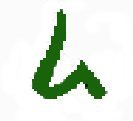 LIAR:
small 1/4 inch brands that mark a convicted liar, thief, traitor etc. I looked at her, puzzled. "Penalty brands," she said. "They are tiny, but clearly visible. There are various such brands. There is one for lying, and another for stealing." LIAR:
small 1/4 inch brands that mark a convicted liar, thief, traitor etc. I looked at her, puzzled. "Penalty brands," she said. "They are tiny, but clearly visible. There are various such brands. There is one for lying, and another for stealing."
Captive of Gor, Pg. 277
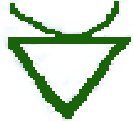 PARAVACI:
"One of the four tribes of the Wagon Peoples, the Paravaci are known as The Rich People. The Paravaci brand is a stylized representation of a bosk head: a semi-circle resting on an inverted isosceles triangle. the Paravaci standard is a large banner of jewels beaded on golden wires, forming the head and horns of a bosk its value is incalculable; the Paravaci brand is a symbolic representation of a bosk head, a semicircle resting on an inverted isosceles triangle." PARAVACI:
"One of the four tribes of the Wagon Peoples, the Paravaci are known as The Rich People. The Paravaci brand is a stylized representation of a bosk head: a semi-circle resting on an inverted isosceles triangle. the Paravaci standard is a large banner of jewels beaded on golden wires, forming the head and horns of a bosk its value is incalculable; the Paravaci brand is a symbolic representation of a bosk head, a semicircle resting on an inverted isosceles triangle."
Nomads of Gor, Pg. 106
 PASSAGE:
"A tiny brand in the form of spreading bosk horns found on the forearm of goreans, it's presence guaranteeing their safe passage, at certain seasons, across the plains of the Wagon People. The stigma attached with such a brand is that the one who wears it approaches the Wagon People as a slave. If the offering of the person of wearing the brand, be it the song of a singer or merchandise from a merchant, is rejected than the bearer is slain out of hand." PASSAGE:
"A tiny brand in the form of spreading bosk horns found on the forearm of goreans, it's presence guaranteeing their safe passage, at certain seasons, across the plains of the Wagon People. The stigma attached with such a brand is that the one who wears it approaches the Wagon People as a slave. If the offering of the person of wearing the brand, be it the song of a singer or merchandise from a merchant, is rejected than the bearer is slain out of hand."
Nomads of Gor, Pg. 34
 PENALTY:
"'This is a penalty brand,' he said. 'It marks you as a liar.' 'Please, Master!' I wept. I no longer have patience with you,' he said. 'Be marked as what you are.' I screamed uncontrollably as he pressed in the iron, holding it firmly into my leg. Then, after some two to four Ihn, he removed it. I could not stop screaming with pain. I smelled the odor of burned flesh, my own. I began to whimper. I could not breathe. I gasped for breath. Still the men held me. 'This penalty brand,' said Rask of Treve, lifting another iron from the brazier, again with a tiny letter at its glowing termination, 'marks you also as what you are, as a thief.' 'Please, no, Master!' I wept. I could not move a muscle of my left leg. It might as well have been locked in a vise. It must wait for the iron. I screamed again, uncontrollably. I had been branded as a thief. 'This third iron,' said Rask of Treve, 'is, too, a penalty iron. I mark you with this not for myself, but for Ute.' Through raging tears I saw, white hot, the tiny letter. 'It marks you as a traitress,' said Rask of Treve. He looked at me, with fury. 'Be marked as a traitress,' he said. Then he pressed the third iron into my flesh. As it entered my flesh, biting and searing, I saw Ute watching, her face betraying no emotion. I screamed, and wept, and screamed. Still the men did not release me. Rask of Treve lifted the last iron from the fire. It was much larger, the letter at its termination some one and a half inches high. It, too, was white hot. I knew the brand. I had seen it on Ena's thigh. It was the mark of Treve. Rask of Treve decided that my flesh should bear that mark. 'No, Master, please!' I begged him. 'Yes, Worthless Slave,' he said, 'you will wear in your flesh the mark of the city of Treve.' 'Please,' I begged. 'When men ask
you,' said he, 'who it was that marked you as a liar and a thief, and traitress, point to this brand, and say, I was marked by one of Treve, who was displeased with me.'" PENALTY:
"'This is a penalty brand,' he said. 'It marks you as a liar.' 'Please, Master!' I wept. I no longer have patience with you,' he said. 'Be marked as what you are.' I screamed uncontrollably as he pressed in the iron, holding it firmly into my leg. Then, after some two to four Ihn, he removed it. I could not stop screaming with pain. I smelled the odor of burned flesh, my own. I began to whimper. I could not breathe. I gasped for breath. Still the men held me. 'This penalty brand,' said Rask of Treve, lifting another iron from the brazier, again with a tiny letter at its glowing termination, 'marks you also as what you are, as a thief.' 'Please, no, Master!' I wept. I could not move a muscle of my left leg. It might as well have been locked in a vise. It must wait for the iron. I screamed again, uncontrollably. I had been branded as a thief. 'This third iron,' said Rask of Treve, 'is, too, a penalty iron. I mark you with this not for myself, but for Ute.' Through raging tears I saw, white hot, the tiny letter. 'It marks you as a traitress,' said Rask of Treve. He looked at me, with fury. 'Be marked as a traitress,' he said. Then he pressed the third iron into my flesh. As it entered my flesh, biting and searing, I saw Ute watching, her face betraying no emotion. I screamed, and wept, and screamed. Still the men did not release me. Rask of Treve lifted the last iron from the fire. It was much larger, the letter at its termination some one and a half inches high. It, too, was white hot. I knew the brand. I had seen it on Ena's thigh. It was the mark of Treve. Rask of Treve decided that my flesh should bear that mark. 'No, Master, please!' I begged him. 'Yes, Worthless Slave,' he said, 'you will wear in your flesh the mark of the city of Treve.' 'Please,' I begged. 'When men ask
you,' said he, 'who it was that marked you as a liar and a thief, and traitress, point to this brand, and say, I was marked by one of Treve, who was displeased with me.'"
Captive of Gor, Pg. 310
 PORT KAR/THIEF'S BRAND
PORT KAR HAS ONE, BUT NOT DESCRIBED, UNLESS IT'S THE THIEFS BRAND. THE THIEF CASTE IS ONLY FOUND IN PORT KAR. "Tiny 1/4 inch three-pronged brand worn on the cheek of those of the Caste of Thieves, who are found only in Port Kar. The thief's scar in Port Kar is a tiny, three-pronged brand, burned into the face over the right cheekbone. It marks the members of the Caste of Thieves in Port Kar. That is the only city in which, as far as I
know, there is a recognized caste for thieves." PORT KAR/THIEF'S BRAND
PORT KAR HAS ONE, BUT NOT DESCRIBED, UNLESS IT'S THE THIEFS BRAND. THE THIEF CASTE IS ONLY FOUND IN PORT KAR. "Tiny 1/4 inch three-pronged brand worn on the cheek of those of the Caste of Thieves, who are found only in Port Kar. The thief's scar in Port Kar is a tiny, three-pronged brand, burned into the face over the right cheekbone. It marks the members of the Caste of Thieves in Port Kar. That is the only city in which, as far as I
know, there is a recognized caste for thieves."
Mercenaries of Gor, Pg. 239
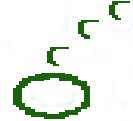 PRIEST KINGS:
"Incidentally, there are many brands on Gor. Two that almost never occur on Gor, by the way, are those of the moons and collar, and of the chain and claw. The first of these commonly occurs in certain of the Gorean enclaves on Earth, which serve as headquarters for agents of the Priest-Kings; the second tends to occur in the lairs of Kurii agents on Earth; the first brand consists of a locked collar and, ascending diagonally above it, extending to the right, three quarter moons; this brand indicates the girl is subject to Gorean discipline; the chain-and-claw brand signifies, of course, slavery and subjection with the compass of the Kur yoke." PRIEST KINGS:
"Incidentally, there are many brands on Gor. Two that almost never occur on Gor, by the way, are those of the moons and collar, and of the chain and claw. The first of these commonly occurs in certain of the Gorean enclaves on Earth, which serve as headquarters for agents of the Priest-Kings; the second tends to occur in the lairs of Kurii agents on Earth; the first brand consists of a locked collar and, ascending diagonally above it, extending to the right, three quarter moons; this brand indicates the girl is subject to Gorean discipline; the chain-and-claw brand signifies, of course, slavery and subjection with the compass of the Kur yoke."
Explorers of Gor, Pg. 12
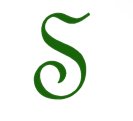 SA-FORA
:"Another common expression for a female slave, incidentally, the initial of which, in cursive script, is sometimes used to mark a girl, is Sa-fora, which means, literally, Chain Daughter." SA-FORA
:"Another common expression for a female slave, incidentally, the initial of which, in cursive script, is sometimes used to mark a girl, is Sa-fora, which means, literally, Chain Daughter."
HUNTERS OF GOR, Pg. 194
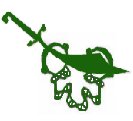 SCHENDI:
"Ulafi then, pushing her head down, fastened the sturdy, steel shipping collar on her throat, snapping it shut behind the back of her neck. It had five palms on it, and the sign of Schendi, the shackle and scimitar." SCHENDI:
"Ulafi then, pushing her head down, fastened the sturdy, steel shipping collar on her throat, snapping it shut behind the back of her neck. It had five palms on it, and the sign of Schendi, the shackle and scimitar."
Explorers of Gor, Pg. 73
 TAHARI:
"Taharic is a very graceful script. It makes no distinction between capital and small letters, and little distinction between printed and cursive script. Anyone who can printed Taharic will have no difficulty in following cursive Taharic. The men of the Tahari are content to form their letters carefully and beautifully, being fond of them. To scribble Taharic is generally regarded not as proving oneself an efficient fellow, but something of a boor, insensible to beauty. The initial printed letter of 'Kajira', rather than the cursive letter, as generally, is used as the common brand for women in the Tahari. Both the cursive letter in common Gorean and the printed letter in Taharic are rather lovely, both being somewhat floral in appearance." TAHARI:
"Taharic is a very graceful script. It makes no distinction between capital and small letters, and little distinction between printed and cursive script. Anyone who can printed Taharic will have no difficulty in following cursive Taharic. The men of the Tahari are content to form their letters carefully and beautifully, being fond of them. To scribble Taharic is generally regarded not as proving oneself an efficient fellow, but something of a boor, insensible to beauty. The initial printed letter of 'Kajira', rather than the cursive letter, as generally, is used as the common brand for women in the Tahari. Both the cursive letter in common Gorean and the printed letter in Taharic are rather lovely, both being somewhat floral in appearance."
Tribesman of Gor, Pg. 148
 THIEF:
"Tiny 1/4 inch three-pronged brand worn on the cheek of those of the Caste of Thieves, who are found only in Port Kar. The thief's scar in Port Kar is a tiny, three-pronged brand, burned into the face over the right cheekbone. It marks the members of the Caste of Thieves in Port Kar. That is the only city in which, as far as I know, there is a recognized caste for thieves." THIEF:
"Tiny 1/4 inch three-pronged brand worn on the cheek of those of the Caste of Thieves, who are found only in Port Kar. The thief's scar in Port Kar is a tiny, three-pronged brand, burned into the face over the right cheekbone. It marks the members of the Caste of Thieves in Port Kar. That is the only city in which, as far as I know, there is a recognized caste for thieves."
Mercenaries of Gor, Pg. 239
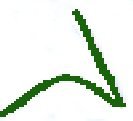 TORVALDSLAND:
"Described as a half circle about an inch and a quarter in width, adjoined at it's right tip by a steep, diagonal line an inch and a quarter in height. In the north, the bond-maid is referred to as a woman whose belly lies beneath the sword. The brand used by Forkbread is not uncommon in the north, though there is less uniformity in Torvaldsland on these matters than in the south, where the merchant caste, with its recommendations for standardization is more powerful. All over gor, of course, the slave girl is a familiar commodity. The brand used by the Forkbread, found rather frequently in the north, consisted of a half circle, with, at its right tip, adjoining it, a steep diagonal line. The half circle is about an inch and a quarter in width, and the diagonal line about an inch and a quarter in height. The brand is, is like many, symbolic. In the north, the bond-maid is sometimes referred to as a woman whose belly lies beneath the sword." TORVALDSLAND:
"Described as a half circle about an inch and a quarter in width, adjoined at it's right tip by a steep, diagonal line an inch and a quarter in height. In the north, the bond-maid is referred to as a woman whose belly lies beneath the sword. The brand used by Forkbread is not uncommon in the north, though there is less uniformity in Torvaldsland on these matters than in the south, where the merchant caste, with its recommendations for standardization is more powerful. All over gor, of course, the slave girl is a familiar commodity. The brand used by the Forkbread, found rather frequently in the north, consisted of a half circle, with, at its right tip, adjoining it, a steep diagonal line. The half circle is about an inch and a quarter in width, and the diagonal line about an inch and a quarter in height. The brand is, is like many, symbolic. In the north, the bond-maid is sometimes referred to as a woman whose belly lies beneath the sword."
Marauders of Gor, Pg. 87
  TREVE:
"I have never seen a brand of Treve," I said. "It is rare," said Ena, proudly. "May I see your brand?" I asked. I was curious. "Of course," said Ena, and she stood up and, extending her left leg, drew her long, lovely white garment to her hip, revealing her limb. I gasped. Incised deeply, precisely, in that slim, lovely, now-bared thigh was a startling mark, beautiful, insolent, dramatically marking that beautiful thigh as that which it now could only be, that of a female slave. "It is beautiful," I whispered. Ena pulled away the clasp at the left shoulder of her garment, dropping it to her ankles. She was incredibly beautiful. "Can you read?" she asked. "No," I said. She regarded the brand. "It is the first letter, in cursive script," she said, "of the name of the city of Treve." TREVE:
"I have never seen a brand of Treve," I said. "It is rare," said Ena, proudly. "May I see your brand?" I asked. I was curious. "Of course," said Ena, and she stood up and, extending her left leg, drew her long, lovely white garment to her hip, revealing her limb. I gasped. Incised deeply, precisely, in that slim, lovely, now-bared thigh was a startling mark, beautiful, insolent, dramatically marking that beautiful thigh as that which it now could only be, that of a female slave. "It is beautiful," I whispered. Ena pulled away the clasp at the left shoulder of her garment, dropping it to her ankles. She was incredibly beautiful. "Can you read?" she asked. "No," I said. She regarded the brand. "It is the first letter, in cursive script," she said, "of the name of the city of Treve."
Captive of Gor, Pg. 277

 TUCHUK:
"One of the four tribes of Wagon Peoples. Their brand is the sign of the four bosk horns, that of the Tuchuk standard, it is only an inch high and resembles an 'H'. It is used to mark both their bosk and their slaves. the brand of the Tuchuk slave, incidentally, is not the same as that generally used in the cities, which, for girls, is the first letter of the expression Kajira in cursive script, but the sign of the four bosk horns, that of the Tuchuk standard; the brand of the four bosk horns, set in such a manner as to somewhat resemble the letter 'H', is only about an inch high; the common Gorean brand, on the other hand, is usually an inch and a half to two inches high." TUCHUK:
"One of the four tribes of Wagon Peoples. Their brand is the sign of the four bosk horns, that of the Tuchuk standard, it is only an inch high and resembles an 'H'. It is used to mark both their bosk and their slaves. the brand of the Tuchuk slave, incidentally, is not the same as that generally used in the cities, which, for girls, is the first letter of the expression Kajira in cursive script, but the sign of the four bosk horns, that of the Tuchuk standard; the brand of the four bosk horns, set in such a manner as to somewhat resemble the letter 'H', is only about an inch high; the common Gorean brand, on the other hand, is usually an inch and a half to two inches high."
Nomads of Gor, Pg. 62
-------------------MEANING & OTHER INFORMATION-------------------
BRAND PLACEMENT: "A girl is commonly branded on the left or right thigh," I said, "sometimes on the lower left abdomen."
Tribesman of Gor
BRANDING RACK: "The girl was brought into the shop and stood in the branding rack, which was then locked on her, holding her upright. The metal worker placed her wrists behind her in the wrist clamps, adjustable, each on their vertical, flat metal bar. He screwed shut the clamps. She winced. He then shackled her feet on the rotating metal platform. "Left thigh or right thigh?" he asked. "Left thigh," said Ulafi. Slave girls are commonly branded on the left thigh. Sometimes they are branded on the right thigh, or lower left abdomen. The metal worker turned the apparatus, spinning the shaft, with its attached, circular metal platform. The girl's left thigh now faced us. It was an excellent thigh. It would take the mark well. The metal worker then, with a wheel, tightening it, locked the device in place, so that it could not turn."
Explorers of Gor, Pg. 71
"The girl before me, so helpless in her chains, would soon be marked. I have wondered upon occasion why brands are used on Gorean slaves. Surely Goreans have at their disposal means for indelibly but painlessly marking the human body. My conjecture, confirmed to some extent by the speculations of the Older Tarl, who had taught me the craft of arms in Ko-ro-ba years ago, is that the brand is used primarily, oddly enough, because of its reputed psychological effect. In theory, if not in practice, when the girl finds herself branded like an animal, finds her fair skin marked by the iron of a master, she cannot fail, somehow, in the deepest levels of her thought, to regard herself as something which is owned, as mere property, as something belonging to the brute who has put the burning iron to her thigh. Most simply the brand is supposed to convince the girl that she is truly owned; it is supposed to make her feel owned. When the iron is pulled away and she knows the pain and degradation and smells the odor of her burned flesh, she is supposed to tell herself, understanding its full and terrible import, I AM HIS. Actually I suppose the effect of the brand depends greatly on the girl. In many girls I would suppose the brand has little effect besides contributing to their shame, their misery and humiliation. With other girls it might well increase their intractability, their hostility. On the other hand, I have known of several cases in which a proud, insolent woman, even one of great intelligence, who resisted a master to the very touch of the iron, once branded became instantly a passionate and obedient Pleasure Slave. But all in all I do not know if the brand is used primarily for its psychological effect or not. Perhaps it is merely a device for merchants who must have some such means for tracing runaway slaves, which would otherwise constitute a costly hazard to their trade. Sometimes I think the iron is simply an anachronistic survival from a more technologically backward age."
Outlaw of Gor
KAN-LARA: (Gorean word meaning 'slave brand'.) "Eta smiled. She pointed to her brand. "Kan-lara," she said. She pointed to my brand. "Kan-lara Dina," she said. I repeated these words."
Slave Girl of Gor, page 80
| |
|
|




